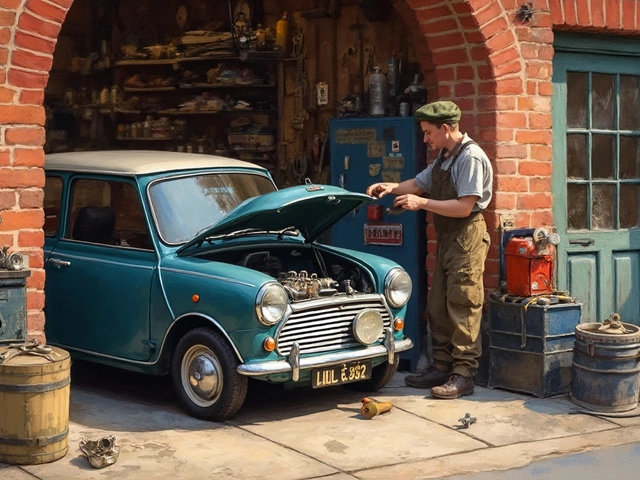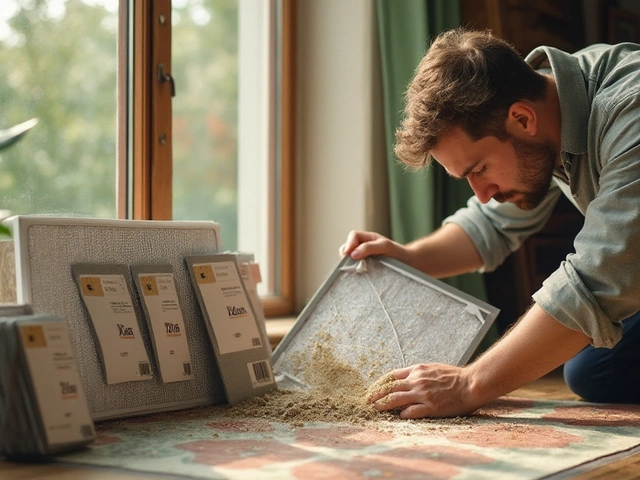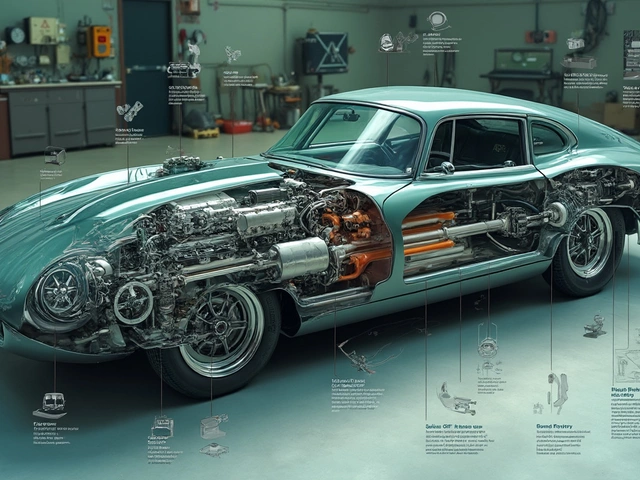Most people hardly give their car radiators a second thought—unless thick steam is pouring out of the bonnet on a rainy M5. Yet, the radiator is like your car’s own air conditioner, gym membership, and first aid kit packed into a chunky slab of metal and plastic. So, how many miles does it carry on before throwing in the towel? Here’s a number that surprises a lot of drivers: car radiators on average last anywhere between 80,000 and 120,000 miles—that’s usually between 8 to 12 years for most folks in the UK. But don't get too comfortable. Some radiators buckle much sooner, and others outlive the car itself. The real difference? How you treat it and what sort of environments you drive through.
What Affects the Lifespan of a Car Radiator?
Radiator lifespans aren’t set in stone. Imagine two identical Fiestas: one spends its life gliding up and down the M4, while the other battles Bristol’s endless potholed lanes and idles in city centre traffic. The motorway-friendly Fiesta’s radiator usually lasts longer. Why? Because stop-and-go driving puts extra stress on the radiator, making it work overtime cooling an engine that’s constantly revving and resting. Also, let’s face it: the UK’s unpredictable weather—icy snaps, muddy puddles, and surprise heatwaves—take their toll. The mixture of water and antifreeze that flows through your radiator is meant to stop corrosion, but if you ignore coolant changes, grit and gunk clog up those tiny channels. Corrosion is a huge killer here. One survey by the AA found that nearly 40% of overheating breakdowns started with neglected coolant or radiator corrosion. That number right there should make anyone sit up straight.
Materials matter, too. Most radiators in modern cars use an aluminium core because it’s lightweight and has top-notch heat-transfer properties, but if the end tanks are made of plastic, that’s a weak spot. Sun exposure and heat cycles eventually make plastic brittle—so even if the core could go another 50,000 miles, a cracked tank turns it all to scrap. In contrast, older brass or copper-core radiators can last longer if looked after, but they add weight and aren’t as efficient at cooling. How you drive, the type of coolant you use, and even how often you open the bonnet and check for leaks or rust, all play their part. You can spot problems early by watching for things like unexplained coolant loss, puddles under the engine, or your temperature gauge creeping up whenever you’re stuck in traffic.
Environment is something most people underestimate. If you live close to the coast (or even drive your car for work in salty, wintery roads), salt accelerates corrosion. Rural roads with extra dust, gravel, or even farm spray can block or damage cooling fins. Urban drivers, meanwhile, face heat-soaked asphalt, constant idling, and air pollution that can add to radiator wear. Regularly towing a caravan or hauling heavy loads? That bumps up the engine’s heat output and gives the radiator a tougher job every single day. Even simple neglect—forgetting to replace an old radiator cap or using tap water instead of proper coolant—can shave years off its life. It’s strange to think something that seems so tough gets brought down by details like these.

Spotting the Warning Signs — When a Radiator Is on Its Last Legs
You don’t need to be a mechanic to catch a sickly radiator if you know what to look out for. The first trouble sign for most is a steadily rising temperature gauge. You might notice it during long traffic crawls, or after driving up a steep hill. Leaking coolant is another classic red flag. Sometimes, you see neon green (or pink) puddles under your car, or notice a sickly sweet smell when you park up. Both are signs the car radiator lifespan is getting close to expiry. On my own run-around, I once ignored rust flakes in the coolant expansion tank—until one freezing January night, the engine nearly boiled over outside a Tesco. Rufus, my dog, was the only one enjoying that adventure.
If you’re always topping up your coolant but never see drops in the driveway, suspect a smaller leak—possibly internal. Radiators can spring leaks in their tiny core tubes or develop cracks in the plastic tanks where you can’t easily see. That’s not all: bubbling noises after shutting off the engine, frequent overheating, or strange white smoke out the exhaust might mean coolant and engine oil are getting uncomfortably close. One notorious baddie is “sludgy” coolant—when antifreeze breaks down, it leaves brown gunk that clogs up the radiator’s fine passages. Left alone, that slop can turn a small problem into a cooked engine. Testing for pressure loss in the radiator (something every garage can do quickly) is one of the most revealing checks.
Here’s a table showing some warning signs, their likely causes, and what to do next:
| Symptom | Likely Cause | Action |
|---|---|---|
| Rising temperature gauge | Blocked core or coolant leak | Check coolant level & flush system |
| Flakes or rust in coolant | Corroded radiator or pipes | Inspect for leaks, flush system |
| Coolant smell or visible leaks | Cracked end tank or worn hose | Replace faulty parts |
| Frequent top-ups without puddles | Internal leak | Pressure test system |
| Sludgy coolant | Deteriorated antifreeze | Flush system thoroughly |
If you spot a problem, don’t try to limp along—car engines don’t take kindly to overheating, and repairs only get pricier the longer you wait. A radiator replacement might set you back £200 to £400 for most UK hatchbacks, more for fancier imports or larger vehicles. That’s still a far better deal than an engine rebuild because you ignored the warning signs.

Maximising Your Radiator’s Lifespan: Care Tips that Really Pay Off
If you want your radiator to last those fabled 100,000 miles (or more), the little habits matter most. Sticking to your car’s coolant change schedule is the number one rule. Most car makers recommend swapping coolant every 2 to 5 years or every 30,000 to 60,000 miles—so pencil it into your calendar. Never top off your expansion tank with just tap water; Bristol’s tap water is hard, full of minerals that clog and corrode radiators from the inside out. Use premixed coolant or distilled water—always.
Give your radiator a look whenever you’re under the bonnet. Check for bent cooling fins (easy to straighten with a small screwdriver), cracks around the end tanks, or signs of white mineral build-up around the hoses. Pull the expansion tank cap (only when the engine’s cold) and look for creamy or rusty residue. If you use your car as a local runabout and barely get up to speed, consider a proper motorway run every now and then—prolonged idling doesn’t give your cooling system time to push coolant and clear out hot spots, which encourages buildup. If you haul heavy loads, tow, or drive up steep hills regularly, stick religiously to coolant changes, and consider installing an auxiliary fan or a higher-performance aluminium radiator. And don’t forget the humble radiator cap. It’s designed to hold pressure and keep coolant from boiling over; if the spring inside weakens, it can let air in or cause leaks in the system. Cheap to replace, and it solves more problems than people realise.
A professional flush is a smart move every time you change the coolant or at least every other year. Garages use pressurised machines to blast sediment and scale out of the radiator core—a true life-extender. If you’re a confident DIYer, you can do a basic flush with a garden hose and plug kit (there are plenty of YouTube tutorials specific to most UK models). Just don’t forget to fully bleed the system of air pockets when refilling with fresh fluid. Trapped air makes hot spots in the engine block where overheating begins. Top mechanics recommend you replace all radiator hoses when the radiator is changed (unless the hoses are nearly new)—old hoses can split under new pressure and ruin a fresh installation.
To wrap up the smart way, remember this checklist:
- Follow the manufacturer’s coolant service schedule without fail
- Always use the correct coolant mix—no shortcuts with tap water
- Check the radiator, hoses, and expansion tank every few months
- Flush the system professionally or DIY at home, but beware air pockets
- Swap the radiator cap if it shows age or corrosion
- Tackle any leaks, sticky thermostats, or overheating early
It’s honestly not rocket science to keep your cooling system—and especially your radiator—happy for 100,000 miles or more. My own car’s on its second radiator at 112,000 miles after a dodgy cap and a handful of Bristol winters, but Rufus still gets to enjoy cold rides to Ashton Court. If you give your radiator a bit of TLC and don’t ignore the warning signs, it’ll quietly do its job for mile after mile, no fuss, no drama, and definitely no smoke plumes at the side of the A370.






